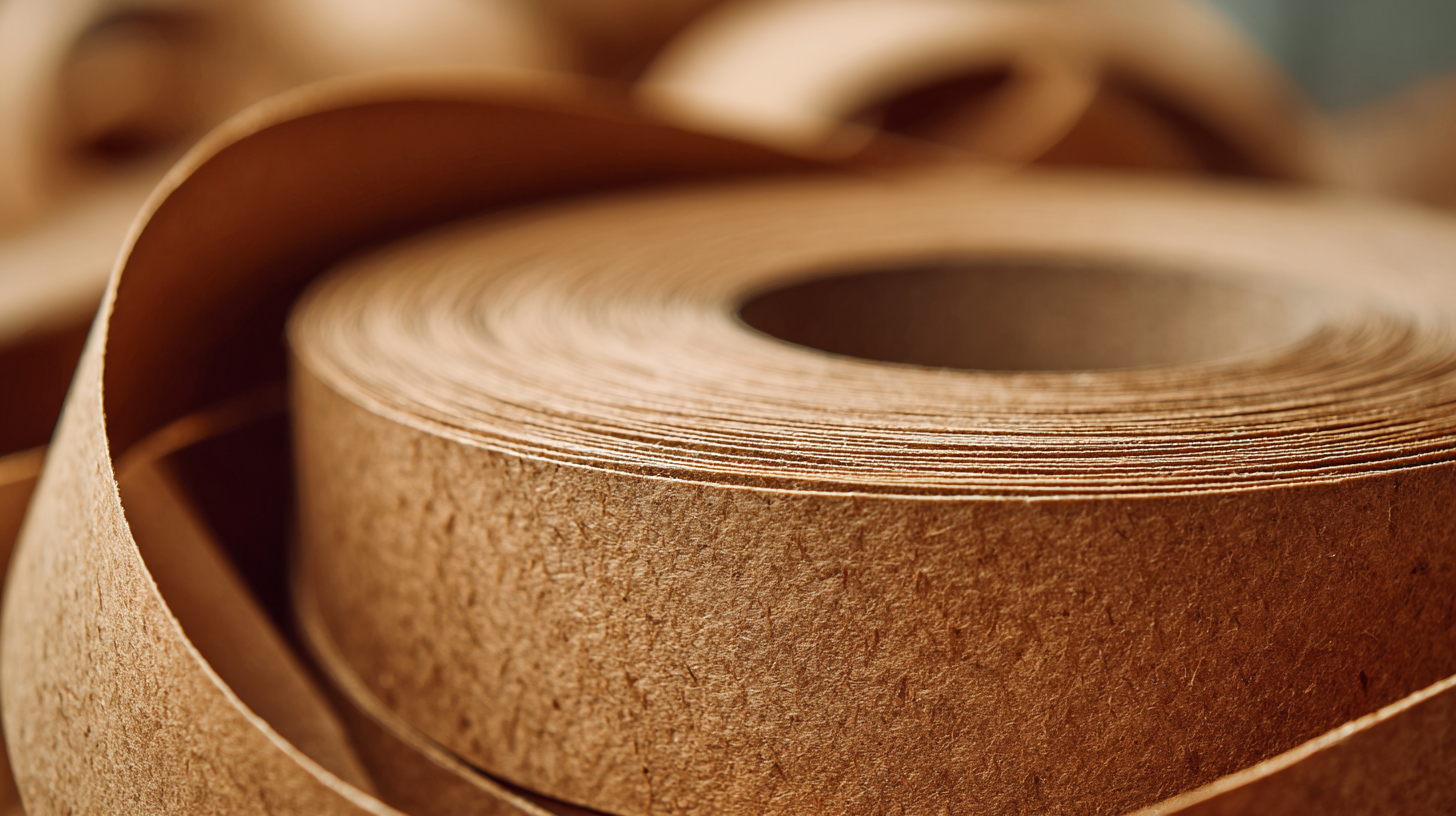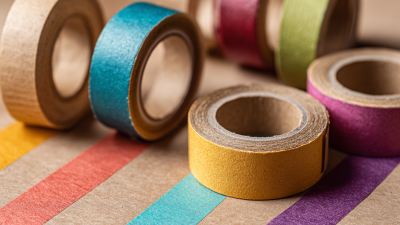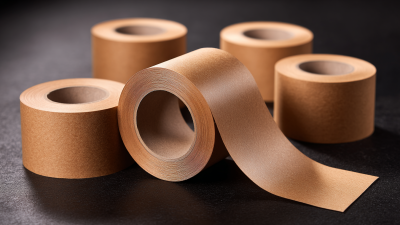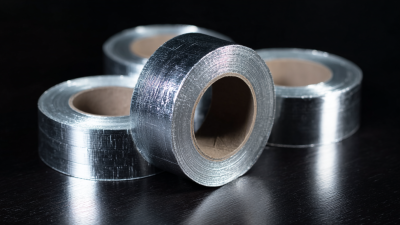Leave Your Message
-
Phone
-
Email
-
Whatsapp


The increasing emphasis on sustainable packaging solutions has prompted industries to seek eco-friendly alternatives that minimize environmental impact. One such innovation gaining traction is "No Residue Kraft Tape." According to a report by Smithers Pira, the global sustainable packaging market is expected to reach $530 billion by 2024, driven by growing consumer demand for environmentally responsible products. No Residue Kraft Tape, made from unbleached paper and free from harmful adhesives, aligns perfectly with this trend, providing a biodegradable and recyclable option for securing packages without leaving a sticky residue behind. This not only enhances the recyclability of packaging materials but also meets the stringent requirements of eco-conscious businesses aiming to reduce their carbon footprint. As more companies pivot towards greener practices, No Residue Kraft Tape emerges as a practical solution that balances functionality with environmental stewardship in the realm of packaging.

No residue kraft tape is gaining recognition as a game-changer in sustainable packaging practices. Unlike traditional adhesive tapes that leave behind sticky residues, no residue kraft tape ensures that surfaces remain clean and intact after use. This feature significantly reduces the need for excessive cleaning or repairs, making it an ideal choice for businesses that prioritize eco-friendly solutions. As more companies embrace sustainability, this tape becomes a practical alternative that aligns with their environmental goals.
Moreover, no residue kraft tape is typically made from natural, biodegradable materials, further enhancing its appeal for sustainable packaging. Its production process often requires fewer resources and emits less carbon compared to synthetic alternatives. When used in packaging, it not only secures products effectively but also contributes to a circular economy by minimizing waste. By integrating no residue kraft tape into their operations, businesses can showcase their commitment to sustainability, attract environmentally conscious consumers, and reduce their overall ecological footprint.
| Benefit | Description | Environmental Impact | Applications |
|---|---|---|---|
| No Residue | Leaves no sticky residue on surfaces after removal. | Reduces waste and cleaning time, minimizing use of chemicals. | Gift packaging, shipping, and crafting. |
| Biodegradable | Made from natural materials that break down over time. | Supports a circular economy by reducing landfill waste. | E-commerce and retail packaging. |
| Strong Adhesion | Offers reliable adhesion for various packaging needs. | Decreases the need for multiple layers of tape, cutting down materials used. | Shipping boxes and industrial use. |
| Customizable | Can be printed with logos or designs for branding. | Promotes sustainable brand initiatives and customer awareness. | Retail and promotional packaging. |
Traditional packaging materials often come with a significant environmental cost. Most conventional tapes and adhesives contain synthetic compounds that do not break down easily, contributing to landfill waste and pollution. Additionally, many of these materials are derived from petroleum, a non-renewable resource, which exacerbates environmental degradation. The production processes involved in making these materials also generate greenhouse gases and other pollutants, further harming ecosystems.

In contrast, no residue Kraft tape offers a more sustainable solution for packaging. Made from natural fibers, it is biodegradable and compostable, reducing the long-term impact on waste systems. Unlike traditional tapes, no residue Kraft tape adheres securely without leaving harmful residues that complicate recycling processes. This ensures that the packaging can be recycled more efficiently, promoting a circular economy. By choosing eco-friendly alternatives like no residue Kraft tape, businesses can significantly lower their carbon footprint and contribute to healthier ecosystems while still meeting their packaging needs.
No residue kraft tape is emerging as a game-changer in eco-friendly packaging solutions, thanks to its key attributes that align with sustainable practices. One of the primary benefits of this type of tape is that it adheres strongly without leaving any sticky remnants. This ensures that packaging can be easily recycled or repurposed, minimizing waste and promoting a circular economy. By using no residue kraft tape, businesses can elevate their environmental impact while maintaining the integrity of their packaging.
Another significant feature is the tape's composition, often made from renewable resources. This natural material offers a biodegradable alternative to traditional plastic tapes, which contribute to landfill overflow and pollution. Additionally, no residue kraft tape can be printed on or customized, allowing brands to convey their commitment to sustainability effectively. This versatility not only meets the functional needs of packaging but also enhances brand visibility while promoting eco-friendly choices in consumers' minds.
No residue kraft tape is emerging as a cost-effective option in the realm of eco-friendly packaging solutions. This type of tape not only adheres securely but also eliminates the need for additional cleaning or preparation of surfaces, which can lead to time and labor savings. Companies can streamline their packaging processes by using no residue kraft tape, minimizing the resources consumed during production and shipment.
When considering the cost-effectiveness of using no residue kraft tape, it’s essential to focus on its long-term benefits. While the initial investment may be slightly higher than traditional tape, the reduction in waste and improved efficiency can lead to substantial savings over time. Businesses can also enhance their brand image by adopting sustainable materials, attracting environmentally-conscious consumers.
Tips: Always evaluate the total cost of ownership when selecting packaging materials. Consider the environmental impact alongside financial factors. Additionally, assess your packaging processes to identify areas where using no residue kraft tape can save time and reduce labor costs. Emphasizing these savings can help justify the switch to more sustainable options in your packaging strategy.
The paper tapes market is poised for significant growth, with projections indicating an increase from USD 6.12 billion in 2025 to USD 9.33 billion by 2035. This surge is largely fueled by the increasing demand for eco-friendly packaging solutions and stringent regulations on plastic waste. As companies strive to achieve their sustainability goals, the adoption of no residue kraft tape has emerged as a pivotal trend within the industry. This eco-friendly alternative not only minimizes environmental impact but also enhances overall packaging efficiency.

The increased awareness around sustainability is influencing packaging decisions across various sectors. Embracing no residue kraft tape aligns perfectly with corporate sustainability commitments, enabling businesses to reduce their ecological footprint. This tape provides excellent adhesion and performance without leaving sticky residues, which simplifies the recycling process and supports a circular economy.
Tips for Implementation:
1. Evaluate the specific needs of your packaging processes to determine the optimal applications for no residue kraft tape.
2. Educate teams on the benefits and functionalities of kraft tape to ensure proper usage and maximize its potential in your packaging strategies.






